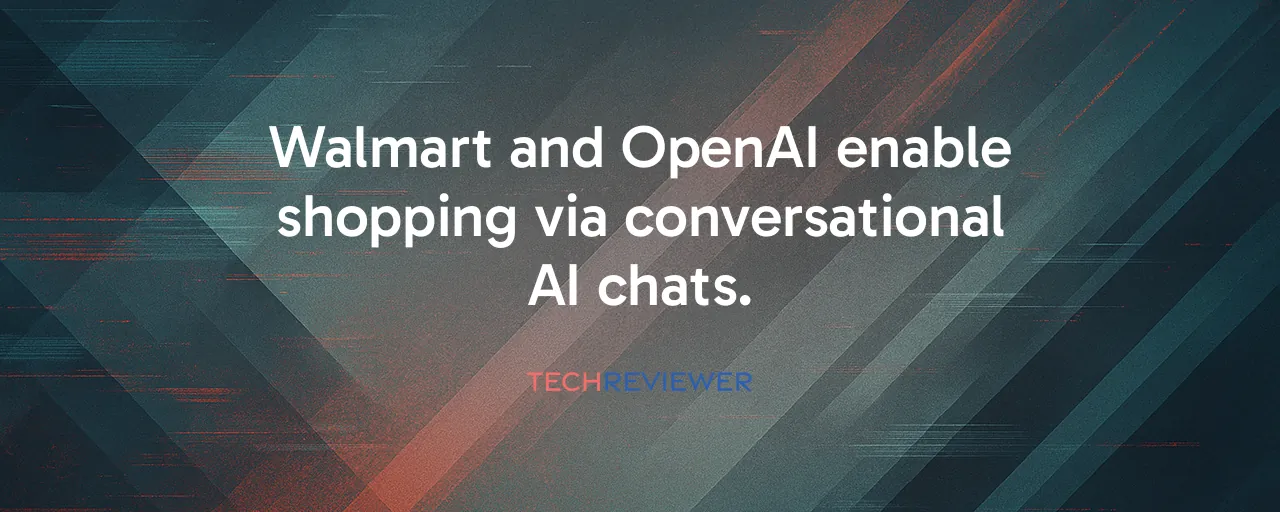Shopping Gets a Voice
Picture a busy evening. You're juggling work emails, dinner plans, and a dwindling pantry. Instead of scrolling through endless product pages, you chat with an AI that suggests a quick meal plan, adds ingredients to your cart, and checks out in seconds. This is the reality Walmart and OpenAI are building with their new partnership, announced on October 14, 2025. By integrating ChatGPT's conversational prowess with Walmart's vast inventory, shoppers can now buy household essentials or plan meals without leaving the chat window. It's a leap from the clunky search bars of old, making online shopping feel as natural as texting a friend.
This isn't just about convenience. The technology, built on the Agentic Commerce Protocol co-developed by OpenAI and Stripe, lets AI understand your needs through dialogue, pulling real-time pricing and inventory data. Want to restock laundry detergent or find a gluten-free pasta? Just say so, and the AI handles the rest, even suggesting new products based on your habits. Walmart's stock jumped 3% to $105.17 after the announcement, signaling investor excitement about a future where shopping blends seamlessly into daily life.
Walmart vs. Amazon: The AI Assistant Race
Walmart isn't alone in this shift. Amazon's Rufus, launched in early 2024 and rolled out to all US customers by September 2024, answers product questions with conversational flair, trained on Amazon's massive catalog and reviews. Both companies are racing to capture a slice of the $4.3 billion AI shopping assistant market, projected to hit $41.9 billion by 2034. Walmart's dual approach, pairing its own AI assistant, Sparky, with OpenAI's ChatGPT, shows a willingness to hedge bets. Sparky focuses on product comparisons and reordering, while ChatGPT offers a broader, chat-driven experience, including third-party seller products from Walmart's marketplace.
The differences are telling. Amazon's Rufus keeps shoppers within its ecosystem, leveraging its dominance in US e-commerce. Walmart, by partnering with OpenAI, taps into ChatGPT's 300 million weekly active users, aiming for reach beyond its own platform. Data from Adobe shows a 4700% surge in retail site traffic from AI browsers and chat services through July 2025, proving consumers are ready to shop this way. Yet, Amazon's projected $700 million revenue boost from Rufus suggests it's not ceding ground easily. Walmart's edge might lie in its physical stores, where AI could bridge online and in-store experiences, unlike Amazon's online-heavy model.
AI That Knows Your Grocery List
What makes this technology stand out? It's the ability to learn and predict. Walmart's AI, powered by OpenAI, doesn't just respond to queries; it anticipates needs. Mention you're hosting a dinner, and it suggests recipes, adds ingredients to your cart, and flags deals on tableware. Research shows these systems improve recommendation precision from 0.75 to 0.82 and increase diversity by 41.2%, meaning you're more likely to discover products you didn't know you needed. For busy parents or elderly shoppers, this cuts decision fatigue, saving time on routine tasks like restocking essentials.
Instacart's Smart Shop, launched in March 2025, offers a glimpse of this potential. It filters 1.3 billion product data points to match dietary needs, helping those with allergies or diabetes shop confidently. Walmart's partnership takes this further, integrating meal planning and personalized suggestions into a single chat. The result? Shopping feels less like a chore and more like a conversation with a helpful assistant who knows your preferences inside out.
The Catch: Privacy and Bias Concerns
As exciting as this sounds, there's a flip side. Every chat with an AI assistant generates a trail of data, your dietary restrictions, gift preferences, even financial limits. These logs, stored for personalization, raise privacy red flags. The Federal Trade Commission launched inquiries in September 2025 to examine how AI chatbots handle sensitive information, especially for children. Without clear data policies, shoppers might unknowingly share details ripe for misuse in advertising or profiling.
Algorithmic bias is another hurdle. If training data skews toward certain demographics, recommendations may favor some groups over others, leading to unequal service. Studies show AI struggles with emotional intelligence, correctly identifying frustrated users only 60-70% of the time, which can sour the experience. Then there's the risk of manipulation; AI could push higher-margin products that aren't the best fit for your needs. Transparency is key, but current systems often operate as black boxes, leaving shoppers in the dark about why certain items top the list.
What's Next for Conversational Commerce
The Walmart-OpenAI partnership is just the start. As conversational commerce grows, projected to hit $5.19 billion by 2033, retailers like Target and Instacart are jumping in with their own AI assistants. The technology promises richer experiences, blending text, voice, and even video inputs for a more immersive shopping journey. Imagine asking your AI to find a gift, seeing product videos in the chat, and buying with a single tap. Experts predict autonomous agents that monitor prices and buy automatically, though that's still years away.
Collaboration could shape the future. The open-source Agentic Commerce Protocol, developed by OpenAI and Stripe, invites merchants and developers to build on it, potentially creating a universal standard. But challenges remain, scaling AI for millions of users, managing energy costs, and ensuring fairness across diverse markets. For now, Walmart and OpenAI have set a high bar, showing how a simple chat can turn shopping into something smarter, faster, and deeply personal. The question is whether shoppers will embrace the convenience or demand more control over their data.
